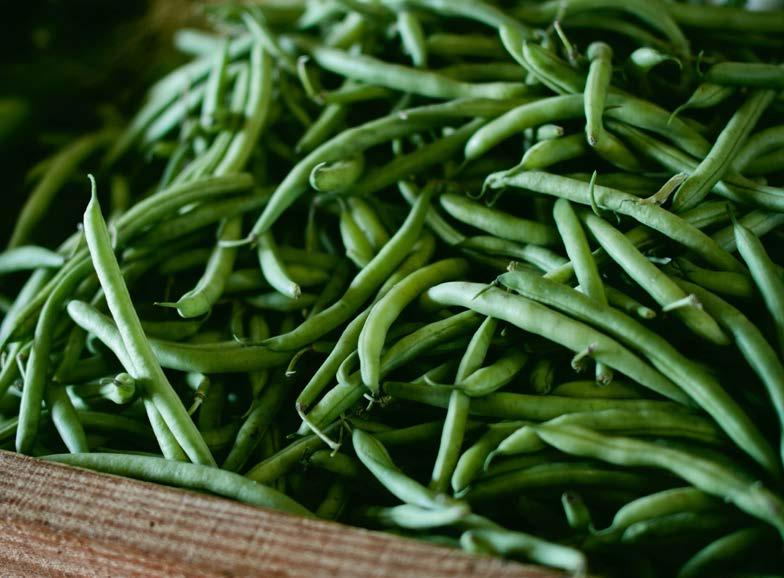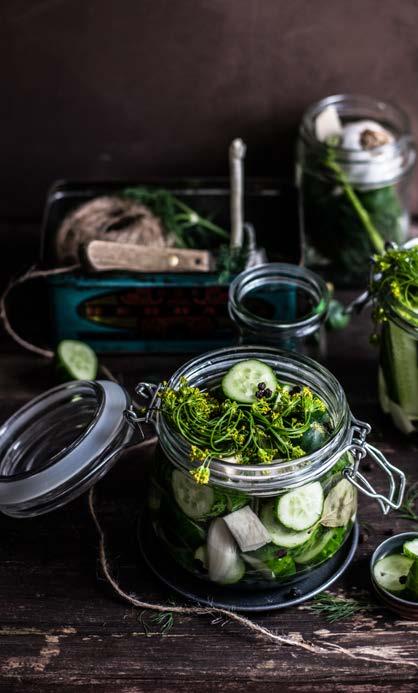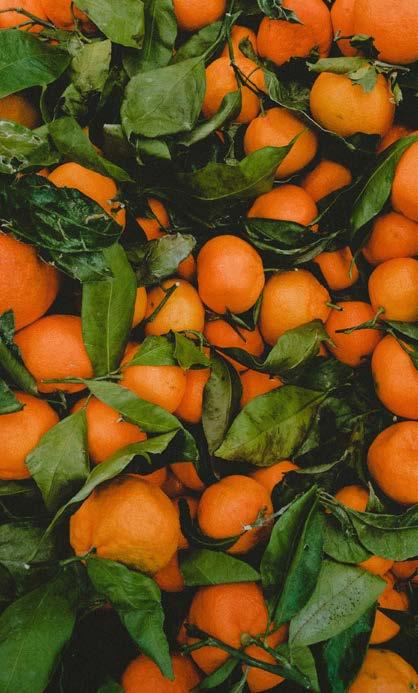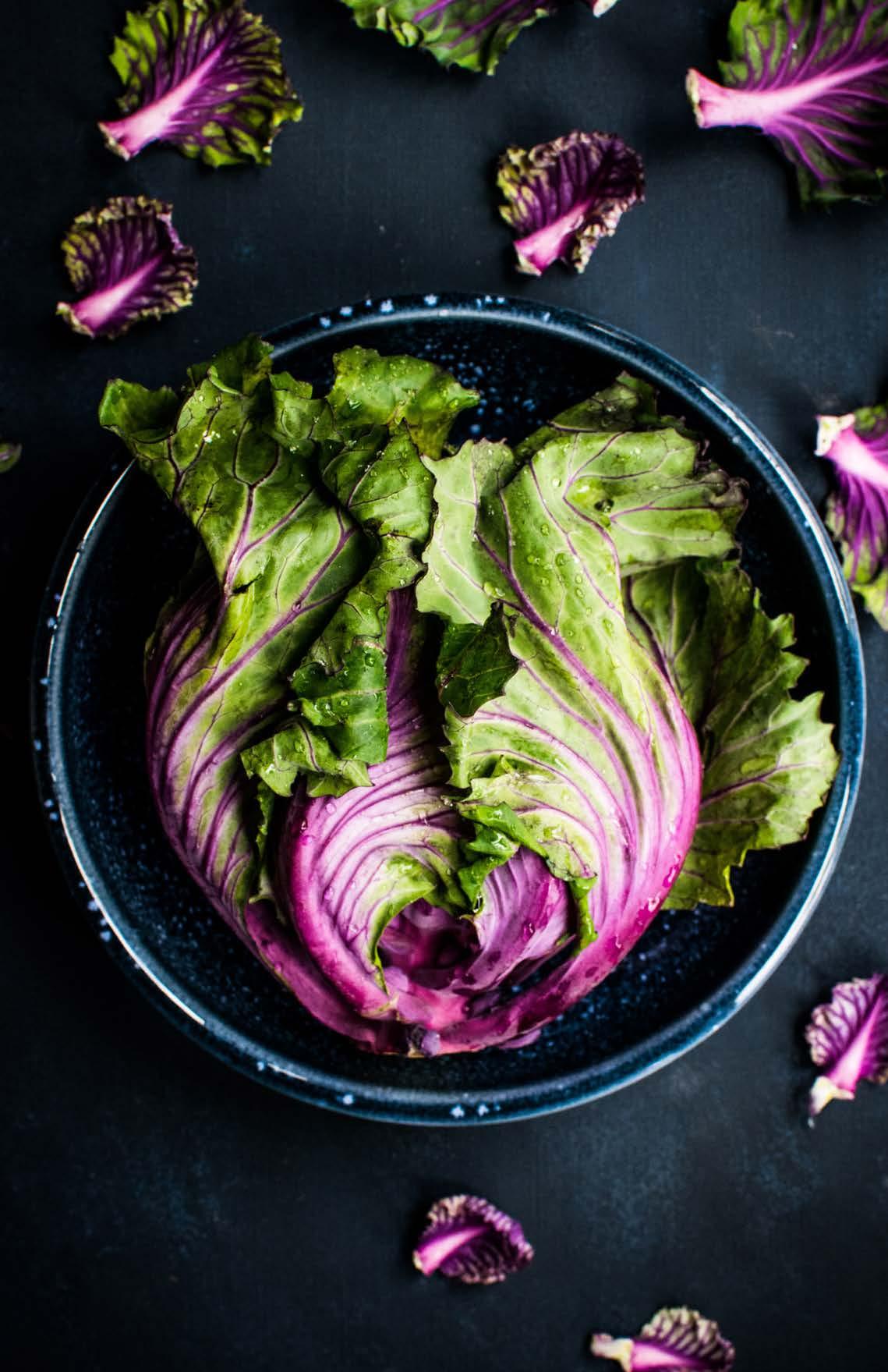
4 minute read
Quick Spring Edibles
Harvesting your own food is one of the most rewarding triumphs a green finger can have. As such, Life is a Garden has complied a quick spring edible list that you can sow and grow now for salads, stews, soups, and smoothies. These fruits and veggies are also great for kids because picking is encouraged (and deliciously rewarding). With quick turnaround times and produce in abundance, these edibles are sure to appeal to even the most impatient gardener.
5 Super speedy vegetables
Advertisement
Grow these yummies in full sun with compost-enriched soil and early morning watering. Seed packets and growing essentials are available at your local garden centre.
1. Radishes - Sowing to harvest: 25 days.
Sow seeds 12mm deep and 2,5cm apart. Dust some soil away before pulling them out to see how they’re doing on size. Younger radishes have a milder taste compared to more mature ones. Try roasting them with garlic and butter or sauté them with red onions.
2. Mixed salad leaves - Sowing to harvest: 21 days.
Sprinkle seeds 30cm apart and cover lightly with a thin layer of compost. Lettuce varieties do well in containers too and can handle a bit of shade throughout the day. They aren’t very demanding, other than daily watering. Enjoy the ultimate crisp and fresh spring salads!
3. Spinach - Sowing to harvest: 30 days.
Seeds like loose soil, 1cm deep and 30cm apart. Grow in edible containers or raised beds and make sure to add a good dose of nitrogen-rich compost. Add raw spinach to your smoothies or juice ‘em up for a calcium, iron, and folic acid boost.
4. Carrots - Sowing to harvest: 50 days.
Press seeds 1cm down in rows of 30cm apart. For best results and faster germination, soak your seeds first by submerging them in water for an hour and then sow in well-watered soil. Carrot sticks with a tasty hummus dip are a super carb-smart spring snack.
5. Dwarf green beans - Sowing to harvest: 60 days.
Non-climbing dwarf beans don’t need any support and should be sown 4cm deep and 15cm apart. Regular picking encourages more growth so get the kids in on the action. Add green beans to bulk up stews, add crunch to salads, or cook a homegrown boereboontjies pot. Life is a Garden

www.lifeisagarden.co.za
@lifeisagardensa

Did you know?
Companion planting is an easy and smart way to get the best from your harvest, your beds, and create beauty in the veggie garden. Protect your produce, feed the bees, and add some pizazz to your grow zone with these companion planting benefits:
• Natural pest controllers: Plants such as lavender (for fleas), basil (for flies), citronella grass and rosemary (for mozzies), as well as chrysanthemum (for spider mites), repel a variety of insects owing to their essential oil compounds and deterring scent. You can sporadically plant these in and around the veggie garden as long as they are in close range of the greens.
• Essential pollinators: Your harvest needs the bees, and they need us. Create a flower border around your veggie garden and bring in friendly flyers to pollinate and spread seeds. Try marigolds, alyssum and cool-season vygies, as well as allowing all herbs to come to flower. Remember to include a freshwater source for our helpers with a way to get in and out too.
• Soil structure activists: Champion companion plants also help improve poor soil conditions by adding lacking nutrients. Comfrey (Symphytum) roots break up heavy clay and create channels for aeration and better water absorption, while also releasing nitrogen, phosphorus, potassium, and calcium into the soil. Yarrow (Achillea millefolium) is a valuable compost heap activator, while also stimulating the soil’s nutrient value as leaves fall off and decompose in the veggie patch (it also has pretty white flowers, yay!).
• Beauty filters: Veggies on-the-grow are already such a lovely sight, as is each one of the above-mentioned budding besties. For super-charged gorgeousness, pollination benefits and insect repellent power, try cosmos, nasturtium (Tropaeolum majus), sunflowers, and sweet pea (Lathyrus odoratus). Make space for these beauties in preparation for spring/ summer planting.
More springtime bliss
If you’re feeling a little more patient, grow these edibles gems now and show off your success!
• Plant asparagus, tomatoes, chillies, peppers, eggplant, cabbage, beetroot, chard, artichokes, baby marrows, parsnips, turnips and watercress.
• Sow seeds of tomatoes, beetroot, eggplants, peppers, cucumbers, mealies, pumpkin, runner beans, maize and sweetcorn, red onions and rhubarb.
• Herbs to plant include dill, chervil, origanum, borage, mustard, caraway, coriander, mint, pennyroyal, rosemary, fennel, basil, anise and summer savoury.
TOP TIP: Remember to head over to your Garden Centre for organic fertilisers to help you get the most from your greens. Grab a seed tray (or three) and don’t forget to check out the pot's section for edible container growing.
Superfruit savvy
These absolutely mouth-watering fruit trees and bushes are ready for some rich soil this season.
• Apples, apricots, avocados, bananas, blackberries, cape gooseberries, cherries, coconuts, dates, grapefruit, guavas, lemons, naartjies, nectarines, oranges, pawpaw's or papaya, pears, pineapples, plums, prunes, raspberries, sweet melon, strawberries and watermelon.
Fuel your body with the goodness of a homegrown harvest that can be as organic as you like. Get some exercise, go more plant-based, enjoy less toxins and more biodiversity, as well as total bragging rights at the next bring and braai. Spring is finally here with a planting section that has been well worth the wait.














